8 October 2019
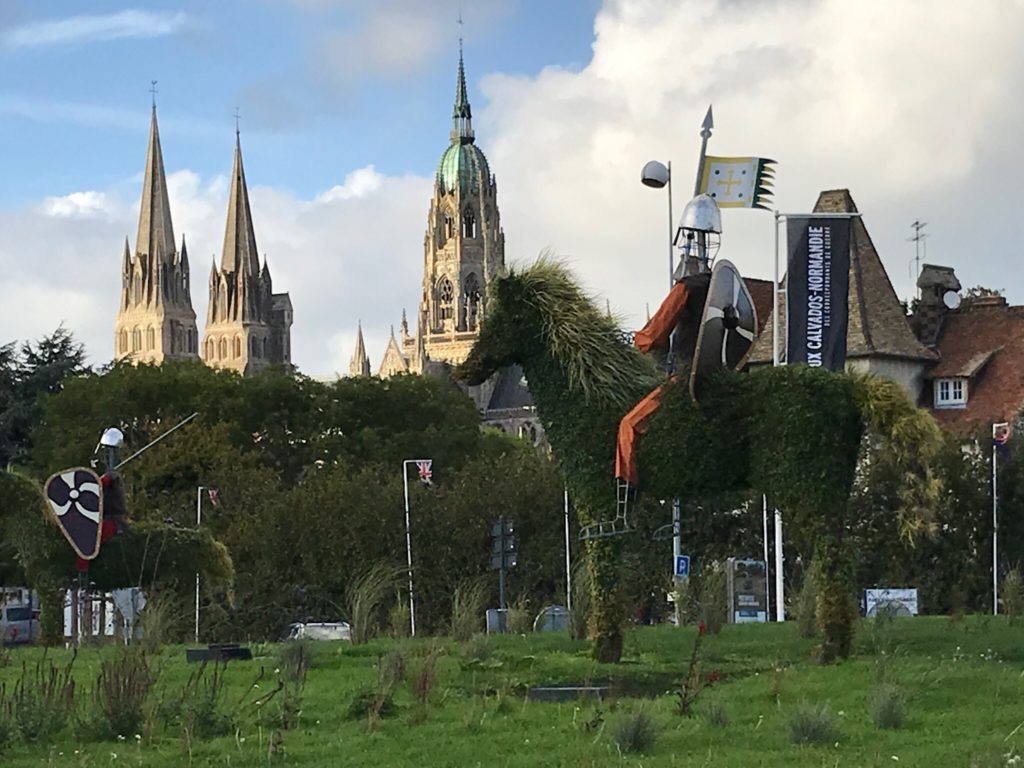
What Caen lacked in charm is more than made up for by the city of Bayeux. Unlucky Caen suffered heavy bombardment, destroying over 70% of its buildings; Bayeux was one of the few Normandy towns completely spared from destruction. It remains a beautiful historic city with cobblestone streets to wander and charming architecture to appreciate.
Bayeux has many interesting sites including the excellent Museum of the Battle of Normandy and the 13th century Norman Gothic Bayeux Cathedral. But the real draw is the Musée de la Tapisserie de Bayeux.
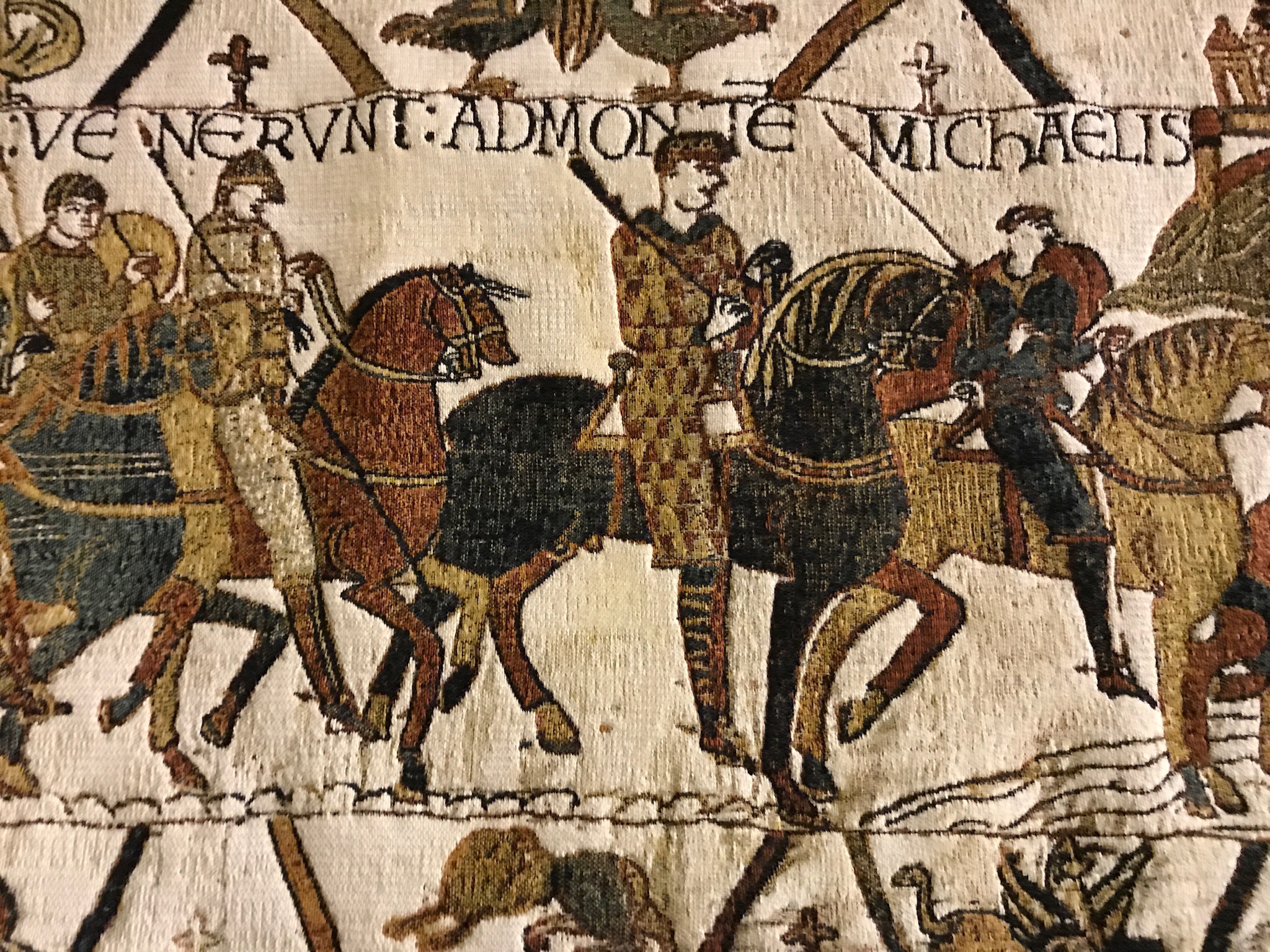
This famous medieval tapestry chronicles the story of William the Conqueror’s 1066 Battle of Hastings and his subsequent conquest of England. The 226’ tapestry was probably commissioned by Bishop Odo, William’s half-brother and is thought to have been sewn in England. No one knows for sure.
It spent several centuries in the cathedral in Bayeux. The cathedral burned twice but miraculously the tapestry did not. It survived the French Revolution, was used as a tarp covering for wagons, and pretty much abused and maltreated for much of its existence. The tapestry was moved for protection during the war, which was always a good thing to keep priceless objects from the view of Nazi collectors.
Finally, after discovering the tapestry would be better protected being shown in a linear presentation, it was brought to this venue in 1983. (In 2025, it will be moving to a new, modern home.) Currently, one is able to “read” the tapestry while an audio guide explains each of its 58 scenes.
This is a priceless piece of history, some 950 years old, and in remarkably good condition. The tapestry consists of nine panels, about 20” high, artfully sewn together to present 58 scenes which tell the story of William, Duke of Normandy, and events which led to the Battle of Hastings on October 14, 1066 and his coronation as William I, King of England in December of that year.
The scope, detail and embroidery are exquisite.
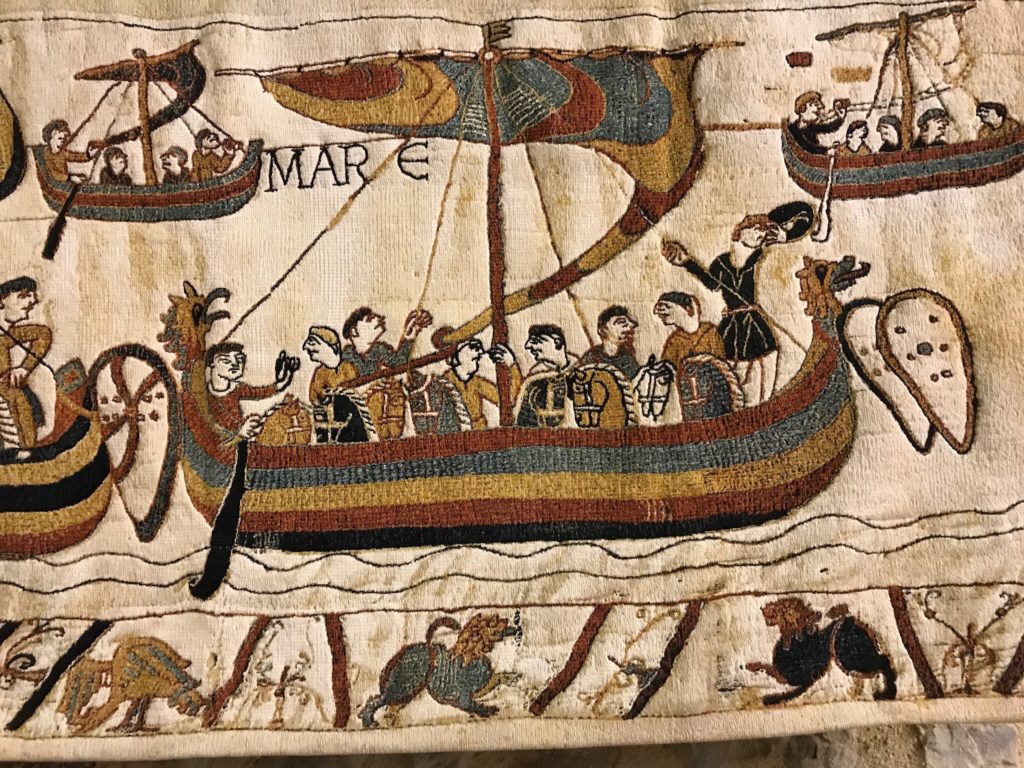
When commissioned, the tapestry was to serve the same purpose as early stained glass or church sculptures – it was to tell the heroic tale of William the Conqueror to the illiterate masses. In other words, it was a masterpiece in propaganda.
The Anglo Saxons did not appreciated the coronation of a Norman king, especially one they referred to as William the Bastard. Threats of rebellion increased. As a result, William built lots of castle fortresses like the one in Caen and The Tower of London. William liked moats and defensible walls and much of his typical Norman architecture can be seen in the churches, like Canterbury and Winchester, and castles throughout Normandy and England.
The museum includes a very good exhibition on Bayeux, Norman and William the Conqueror. The cinema explaining the making and history of the tapestry is excellent and perhaps should be seen first as it explains much not mentioned in the audio guide, like the Saxons are the ones with the facial hair, Normans had none and shaved the back of heads.
And, not having seen a moment of the series but realizing what a draw this will be, on the occasion of the final season of Game of Thrones, a 262 foot “Tapestry Game of Thrones” is exhibited in Bayeux’s Hôtel du Doyen until the end of the year. Though low tourist season and the town looks empty, a huge crowd stands in line for this event. Great money-maker for Bayeux but double UGH.
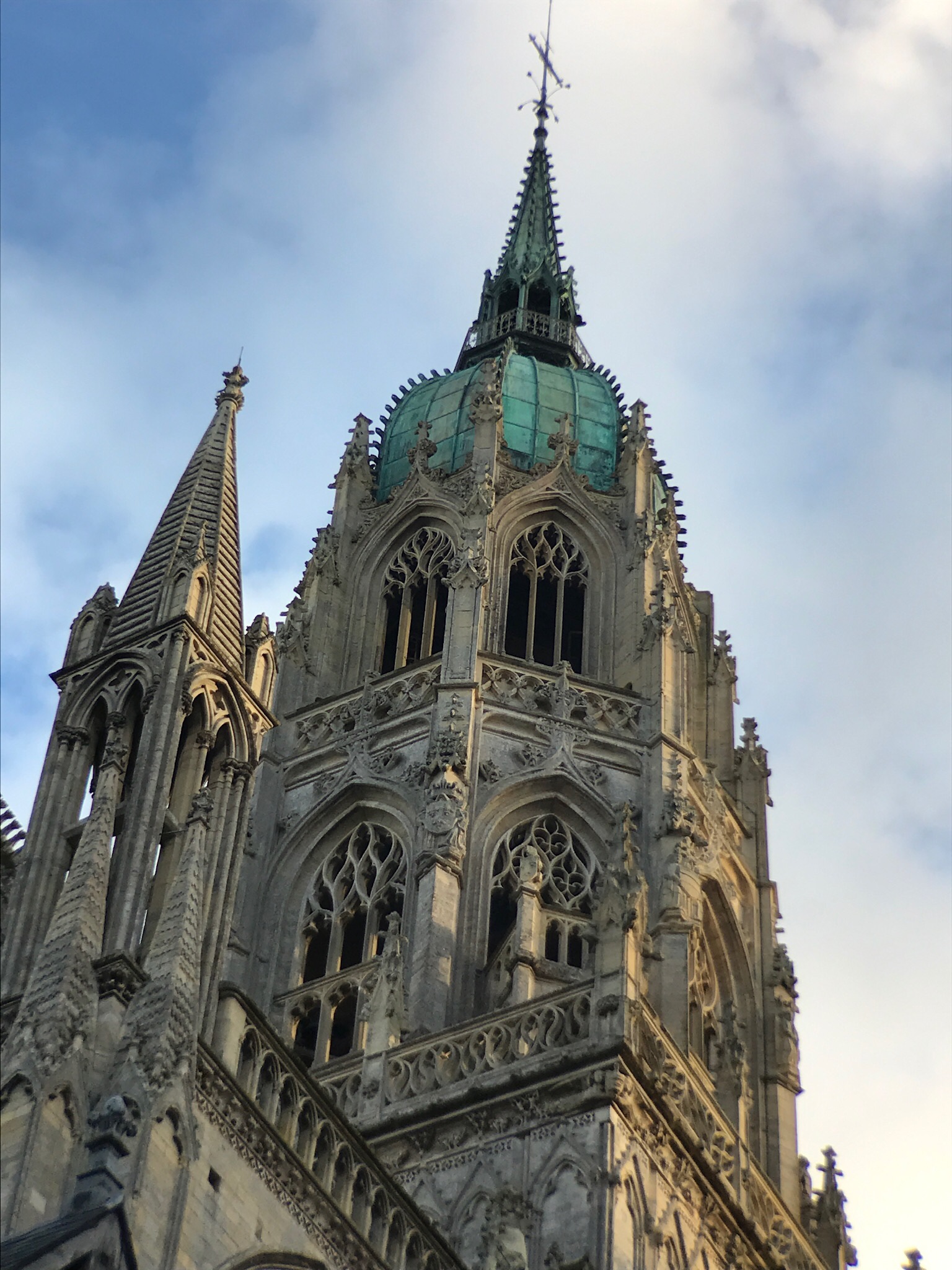
Bayeux Cathedral dominates the skyline and is an impressive architectural mix of Norman-Romanesque with later added touches of gothic. The cathedral was consecrated on 14 July 1077 in the presence of William. It is thought that it was in this cathedral that William made his half-brother Harold Godwinson take an oath to support their father’s desire to have William crowned as his successor. It was the breaking of this oath that brought on William’s storming of English shores, the death of his brother, and the crowning of William as the King of England. The very story told by the Bayeux Tapestry.
The Musée de la Bataillon de Normandy does an excellent job of describing the day by day events of the Normandy invasion of 6 June 1944. All aspects of the war, from the long preparations for Operation Overlord to its execution and beyond are explained using maps, photos, videos, and displays. The plethora of photos document the lives of the soldiers as they battled their way across the fields of Normandy, pushing the Germans out. One thing that is so noticeable in many photos are the bodies laying everywhere. The battles were so fierce it may have taken days before the dead could be buried in temporary graves. Soldiers’ descriptions of the battles, their pride in their unit, and their determination to achieve their goals are expressed in countless videos and quotes. Far from home, difficult and grim days, yet soldiers are glad to be here fighting for freedom.
Even though D-Day museums become repetitive at some point, each has a uniqueness and offers the visitor additional insight and knowledge about this historic time. Here, the information on the war correspondents caught my eye. I had not realized Ernest Hemingway actually landed at the Fox Sector of Omaha Beach before following our troops on to Paris. Another war correspondent was Andy Rooney, the droll wit who closed for 60 Minutes each week for years.
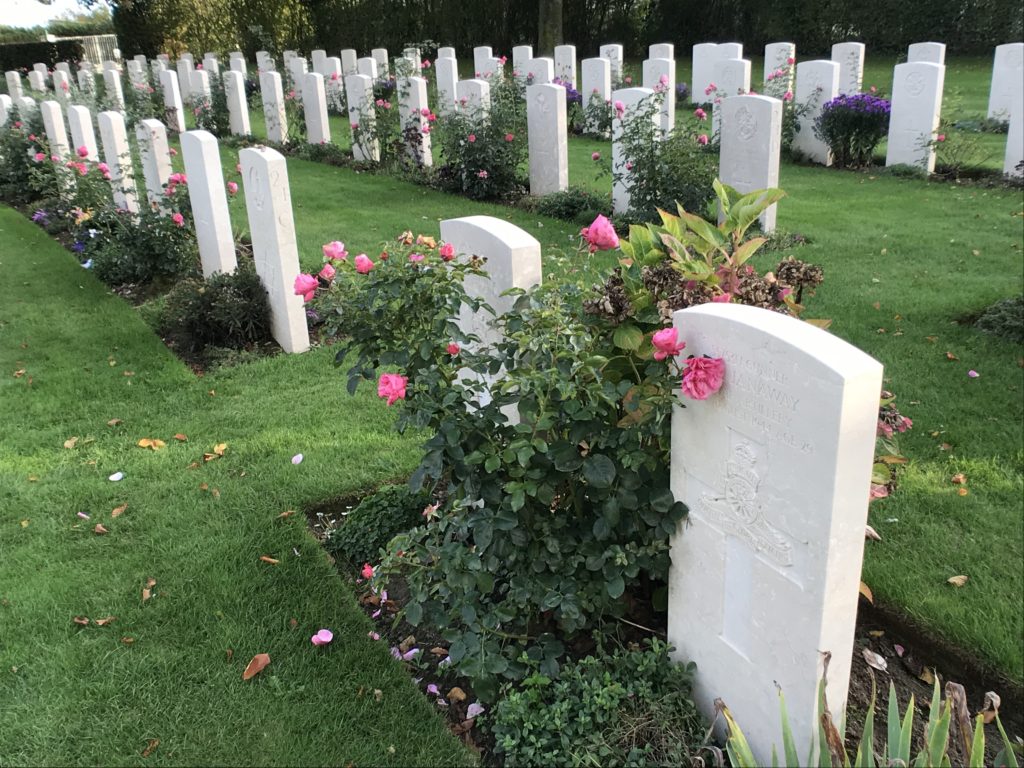
Walk across the street from the museum for some quiet minutes at the Bayeux Military Cemetery. The cemetery grounds were given by France to the Commonwealth and contains 4,648 graves, mostly of men who died in the Normandy invasion. Additionally, there are 466 graves of German soldiers. The Memorial across the street commemorates more than 1,800 casualties of the Commonwealth forces who died in Normandy and have no known grave.
We, once conquered by William, have now set free the Conqueror’s native land – British Military Cemetery, Bayeux Memorial
0 Comments